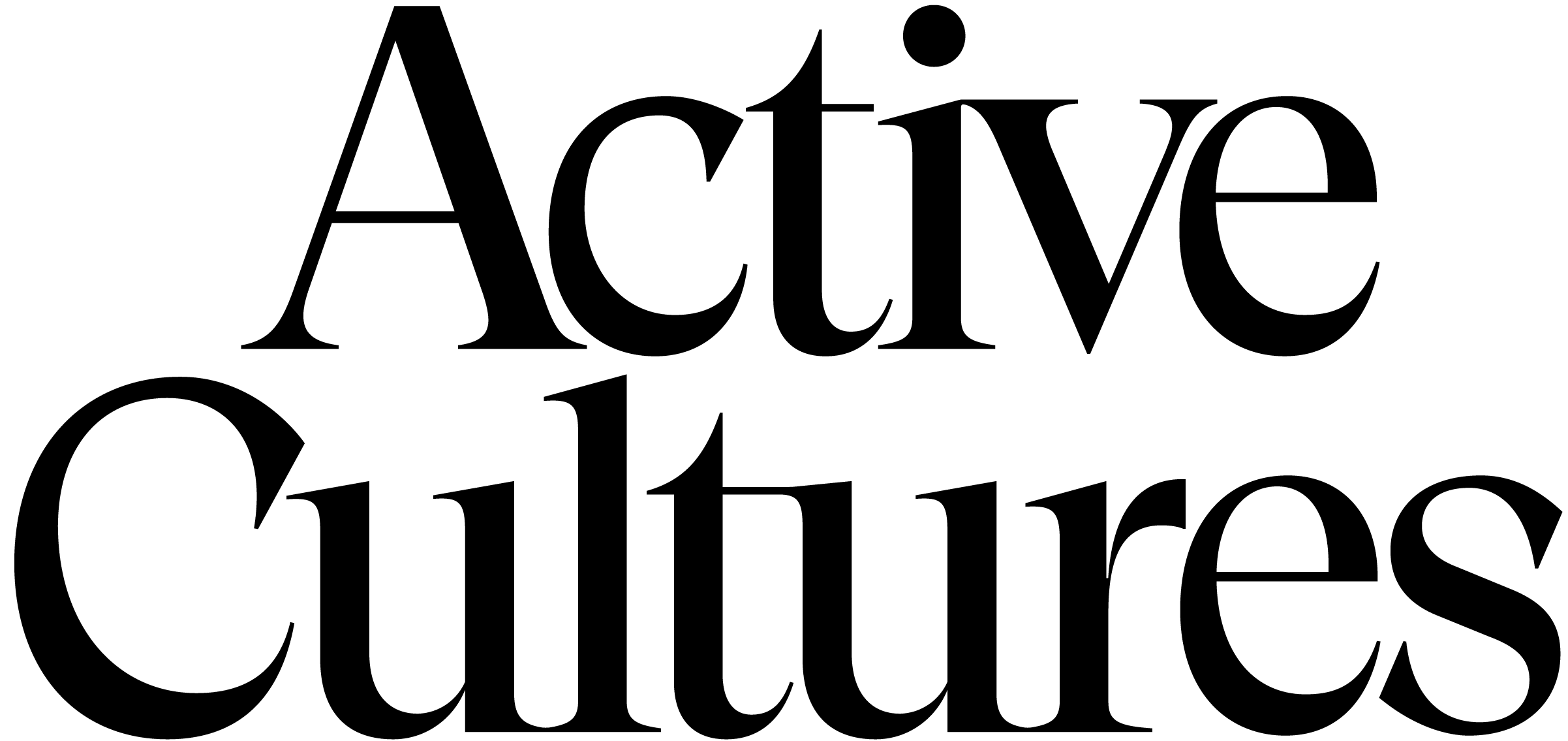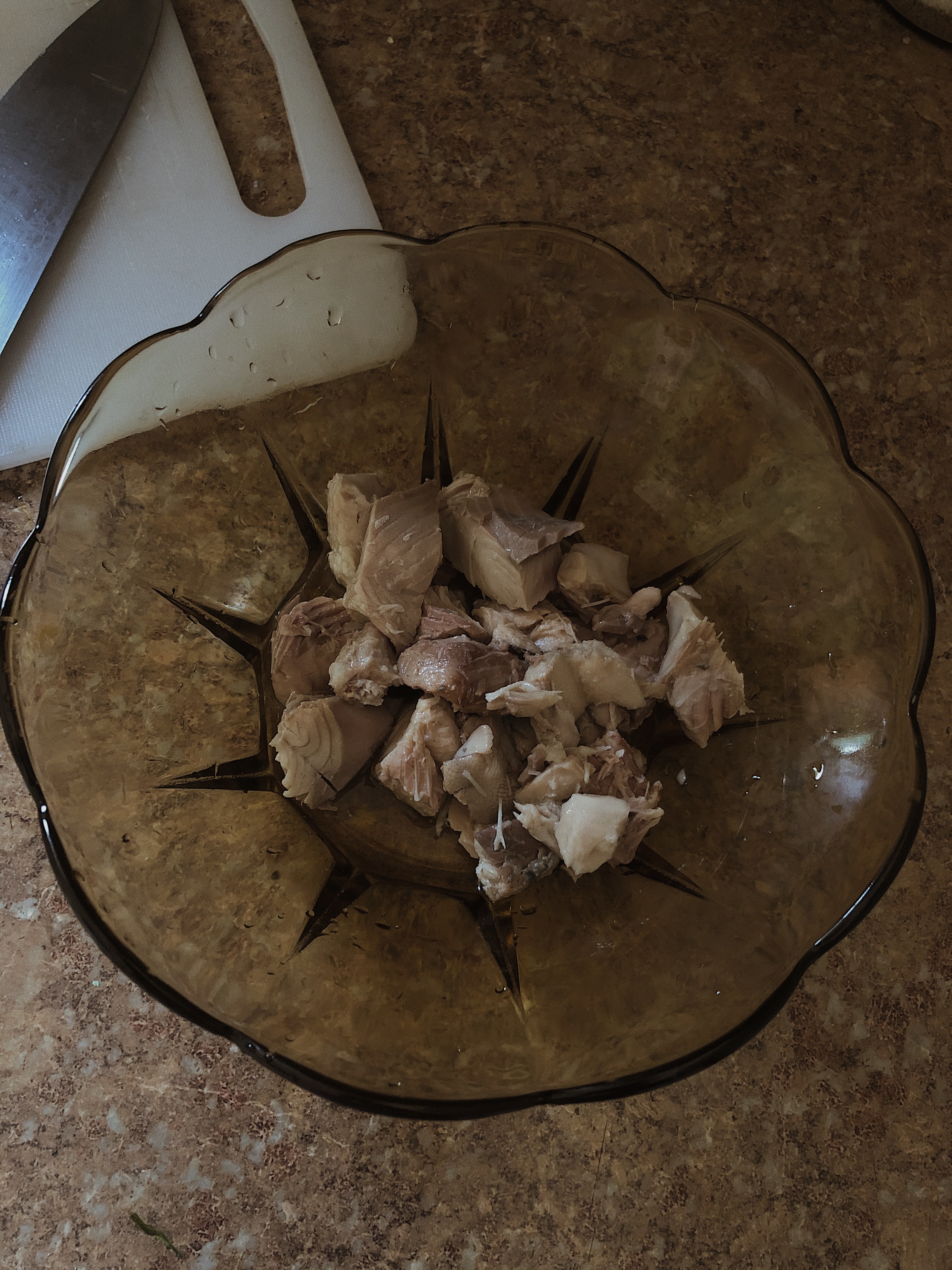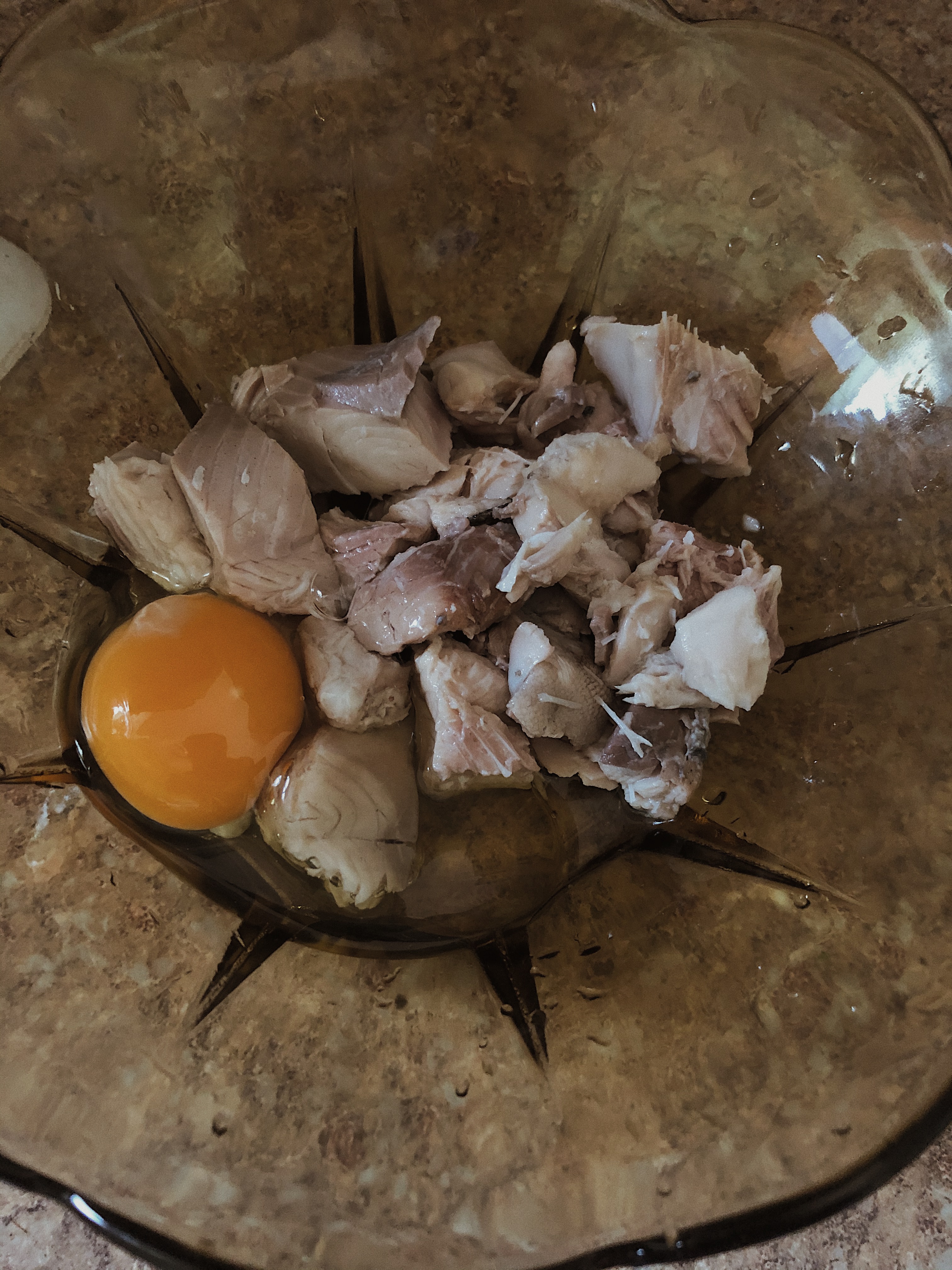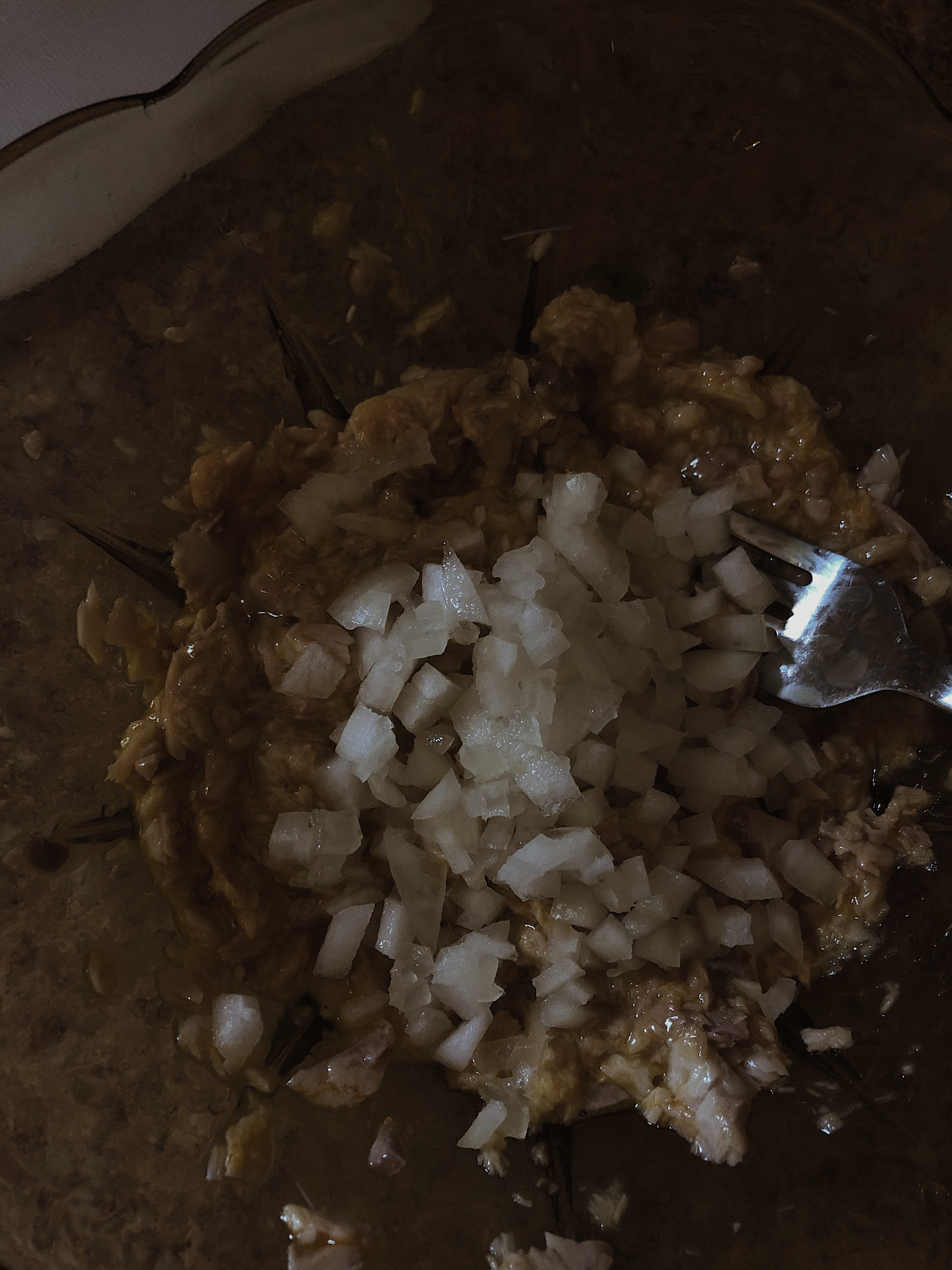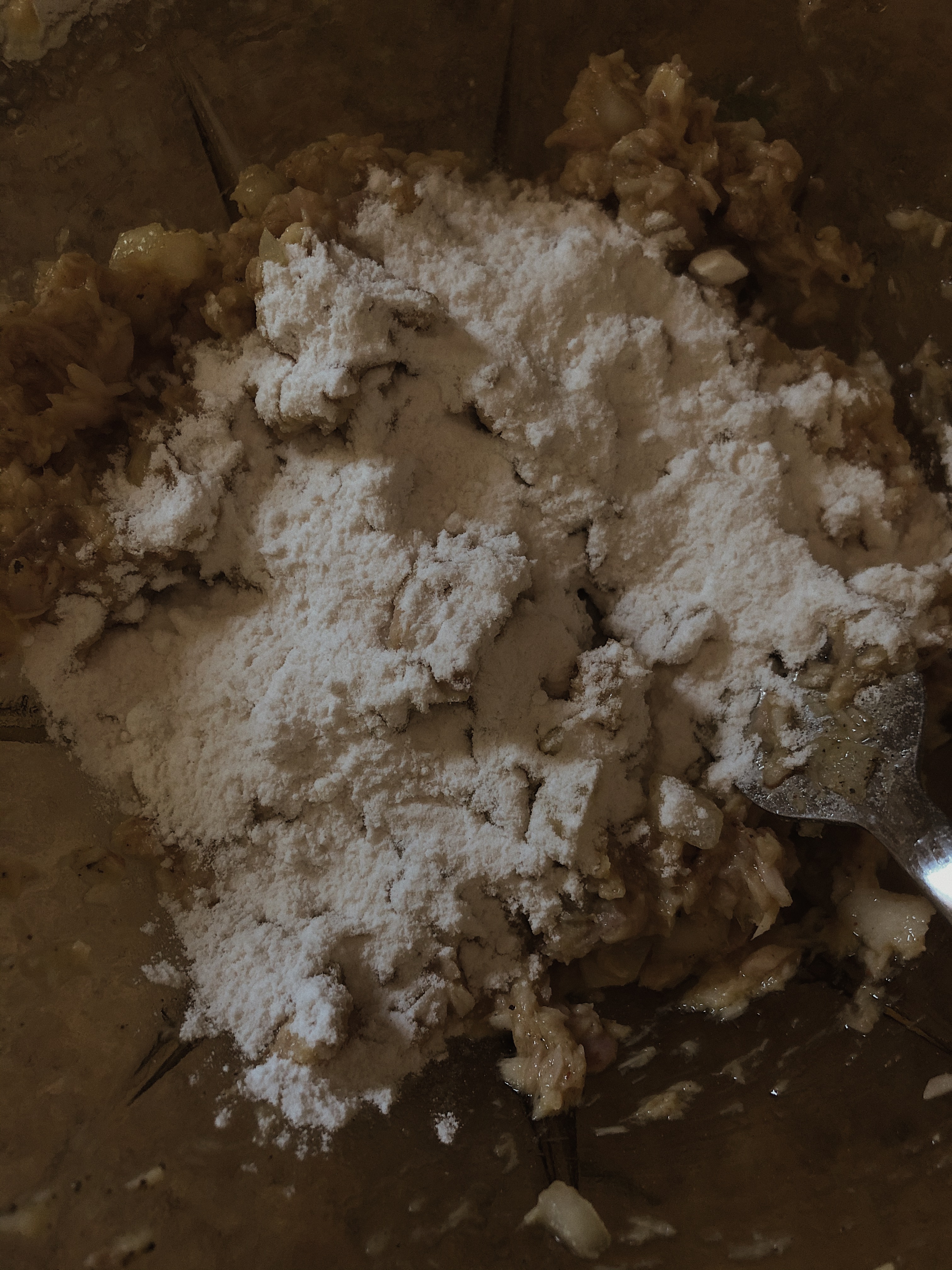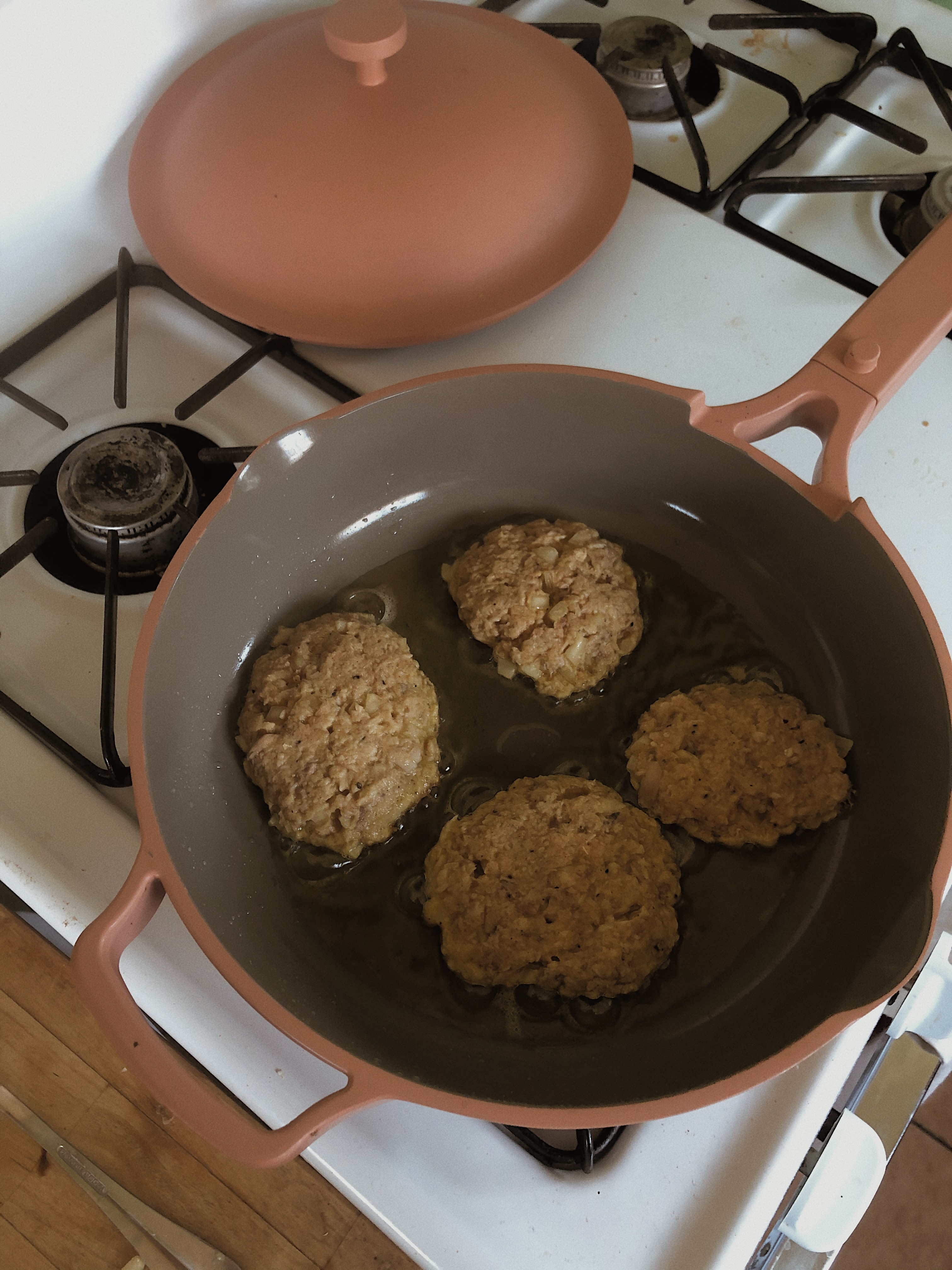"Salmon Croquettes" was published in Active Cultures’ Digest, Issue 04, June 2020.
Image: Salmon Croquettes, 2020. Courtesy of the artist.
__
Rikkí Wright is a Photographer and Filmmaker based in Los Angeles. Her work explores notions of community and sisterhood, especially among women of color, and looks at the way a community can mold or expand our ideas of femininity and masculinity, strength and beauty. Wright grew up with two older sisters who were her best friends and her source of support through life's trials and tribulations, beginning with the loss of Wright's mother at the age of two. Her sisters taught her the power of having women by her side who she could be real with and depend on, and her work seeks to capture this sense of power. At the same time, she felt the void of her mother intensely, and her youth was marked by a constant sense of searching for examples of femininity and motherhood. At her grandmother's house, she would spend hours studying the poses and gestures of the women in the family portraits hanging on the walls. Wright's aunt was also a photographer, and she would accompany her aunt to the studio and marvel at the way women would command their bodies before the camera. Photography became a way for Wright to explore the void left by her mother, using the camera to imagine different possibilities for womanhood. As her art has evolved, Wright has sought to question the lines dividing femininity from masculinity and challenge traditional ideas of what masculine strength should look like. Wright has always gathered inspiration from the natural world, and her work is concerned with the way the environment and the individual shape each other. She is currently working on research for an upcoming documentary film.
Image: Salmon Croquettes, 2020. Courtesy of the artist.
__
Rikkí Wright is a Photographer and Filmmaker based in Los Angeles. Her work explores notions of community and sisterhood, especially among women of color, and looks at the way a community can mold or expand our ideas of femininity and masculinity, strength and beauty. Wright grew up with two older sisters who were her best friends and her source of support through life's trials and tribulations, beginning with the loss of Wright's mother at the age of two. Her sisters taught her the power of having women by her side who she could be real with and depend on, and her work seeks to capture this sense of power. At the same time, she felt the void of her mother intensely, and her youth was marked by a constant sense of searching for examples of femininity and motherhood. At her grandmother's house, she would spend hours studying the poses and gestures of the women in the family portraits hanging on the walls. Wright's aunt was also a photographer, and she would accompany her aunt to the studio and marvel at the way women would command their bodies before the camera. Photography became a way for Wright to explore the void left by her mother, using the camera to imagine different possibilities for womanhood. As her art has evolved, Wright has sought to question the lines dividing femininity from masculinity and challenge traditional ideas of what masculine strength should look like. Wright has always gathered inspiration from the natural world, and her work is concerned with the way the environment and the individual shape each other. She is currently working on research for an upcoming documentary film.
In 2010, I took a trip to Colombia, where my maternal grandmother was born. I walked the streets of Bogotá, trying earnestly to envision her life there before she moved to Los Angeles. I walked most mornings exploring the neighborhood I was staying in to familiarize myself with a small part of the city. The moment I found my grandmother in Bogotá is the memory that has stayed with me in the 10 years since that trip. I walked into a small café, looking for a mid-morning snack, and perused the menu. My eyes landed on "huevos pericos," and as I read the description, I was immediately transported to my grandmother's kitchen as she prepared my daily breakfast. I spent much of my childhood in her kitchen. These eggs, my grandmother's eggs, with green onions singed with butter and chopped tomato melted together with softly cooked creamy eggs, were in fact Colombian eggs. They were not mine to claim, as they belonged to the generations of children, mothers, and grandmothers before me. I find myself compelled to dig deeper here and to think about the ways that ingredients arrive at a particular locale, the labor of the people who harvest the foods that become national staples, and the ways recipes move and shift through both temporal and geographic landscapes. I reflect often about how of all things, we remember meals, we recall so often with fondness the food made by our loved ones, and if we are fortunate, we remember the recipes to pass on what we were given through those meals. This is how we survive.
I often think about the things I can pass on to my daughter. I have a collection of items I hope to leave to her one day. There is, however, this pressing need for me to give her the things which can never be stripped away, the knowledge and memory of the foods we ate together. I have, for some time, been thinking deeply about memory. Perhaps more than just memory I have contemplated how our bodies inherit energy, movement, and gestures. I have thought more recently about how food and cooking shape our memory and the ways in which we preserve histories both familial and cultural through recipes and meals.
My grandmother gave me many things. She taught me Spanish and tried to preserve my native tongue once I left her home for school every day. I learned so much about Los Angeles by driving around the city as she ran her errands and visited friends. During the many years I spent in her home, I unwittingly inherited her love of cooking and the particular instinct for it. I had not asked for it, nor did I know it could be given. There was, however, never any doubt that my grandmother possessed a skill I have seen in so few other people. I can recall in a visceral way the food she made. Every meal she ever cooked for our family was from scratch, and each with its own unique taste. I have attempted many times to replicate this taste in my own kitchen and can never seem to perfect it. Of course, it is in the kitchen where my body remembers her and what she passed down to me. It's in the whisking of eggs, the consistent stirring of avena y canela in her small enameled cast iron pot, the pinching of salt and chopping of vegetables for the fideo soup she made, where the kinetic memory of her resides. I cannot always recall in my mind specific memories of the gestures of cooking I learned from her, but when I taste my food, I know she is in the kitchen with me.
It was in this vein that I came to be inspired by Rikkí Wright's work. Her images of specific ingredients for family recipes, the pots she uses that were passed down to her, and the ways nostalgia and reverence flow through her work immediately transport me back to the kitchen with my grandmother. It is this traveling of sorts that interests me, how food evokes and conjures memories, and acts as a medium to travel to the site of those memories. Rikkí's work led me to Essence Harden, who offers a beautiful reflection on family photographs that document Black life, that hold it as record and function as sites of memory. As I began writing about my grandmother and the food that shaped my recollection of her, I recalled the work of Lucia Hierro. In her piece Breakfast Still Life with Greca, I found a piece of my own life recorded through image. The Quaker oatmeal and the cinnamon sticks and the cafecito evoked the daily rituals of the kitchen and my grandmother. This idea that even an image of a meal can conjure memory, and that we might build histories out of what we eat, speaks to the power of food. Meals contain within them intimate histories and become records of our daily lives. This issue of Digest was crafted with this in mind, not only as a call to ruminate on the ways that food shapes memory, but to also compel us to think deeply about the histories and people that coincide and intersect with food.
There is a moment in Michael Twitty's brilliant book The Cooking Gene where he writes, "This is how we remembered each other—by what we ate." It is such a succinct statement that it gave me pause. The memory is the survival. What would we be without memory, both collective and individual? What would we eat, I wonder, if we hadn't been given that which our grandmothers and mothers tucked away for safekeeping? In the food and recipes is the story of how we have triumphed—how we resist and persist. Even more, in the story of our survival are the histories of the land, the movement of people, and the families both forged and destroyed. It is not lost upon me that when I share huevos pericos with my daughter, I am also sharing the story of my family and the land and people we come from.
I often think about the things I can pass on to my daughter. I have a collection of items I hope to leave to her one day. There is, however, this pressing need for me to give her the things which can never be stripped away, the knowledge and memory of the foods we ate together. I have, for some time, been thinking deeply about memory. Perhaps more than just memory I have contemplated how our bodies inherit energy, movement, and gestures. I have thought more recently about how food and cooking shape our memory and the ways in which we preserve histories both familial and cultural through recipes and meals.
My grandmother gave me many things. She taught me Spanish and tried to preserve my native tongue once I left her home for school every day. I learned so much about Los Angeles by driving around the city as she ran her errands and visited friends. During the many years I spent in her home, I unwittingly inherited her love of cooking and the particular instinct for it. I had not asked for it, nor did I know it could be given. There was, however, never any doubt that my grandmother possessed a skill I have seen in so few other people. I can recall in a visceral way the food she made. Every meal she ever cooked for our family was from scratch, and each with its own unique taste. I have attempted many times to replicate this taste in my own kitchen and can never seem to perfect it. Of course, it is in the kitchen where my body remembers her and what she passed down to me. It's in the whisking of eggs, the consistent stirring of avena y canela in her small enameled cast iron pot, the pinching of salt and chopping of vegetables for the fideo soup she made, where the kinetic memory of her resides. I cannot always recall in my mind specific memories of the gestures of cooking I learned from her, but when I taste my food, I know she is in the kitchen with me.
It was in this vein that I came to be inspired by Rikkí Wright's work. Her images of specific ingredients for family recipes, the pots she uses that were passed down to her, and the ways nostalgia and reverence flow through her work immediately transport me back to the kitchen with my grandmother. It is this traveling of sorts that interests me, how food evokes and conjures memories, and acts as a medium to travel to the site of those memories. Rikkí's work led me to Essence Harden, who offers a beautiful reflection on family photographs that document Black life, that hold it as record and function as sites of memory. As I began writing about my grandmother and the food that shaped my recollection of her, I recalled the work of Lucia Hierro. In her piece Breakfast Still Life with Greca, I found a piece of my own life recorded through image. The Quaker oatmeal and the cinnamon sticks and the cafecito evoked the daily rituals of the kitchen and my grandmother. This idea that even an image of a meal can conjure memory, and that we might build histories out of what we eat, speaks to the power of food. Meals contain within them intimate histories and become records of our daily lives. This issue of Digest was crafted with this in mind, not only as a call to ruminate on the ways that food shapes memory, but to also compel us to think deeply about the histories and people that coincide and intersect with food.
There is a moment in Michael Twitty's brilliant book The Cooking Gene where he writes, "This is how we remembered each other—by what we ate." It is such a succinct statement that it gave me pause. The memory is the survival. What would we be without memory, both collective and individual? What would we eat, I wonder, if we hadn't been given that which our grandmothers and mothers tucked away for safekeeping? In the food and recipes is the story of how we have triumphed—how we resist and persist. Even more, in the story of our survival are the histories of the land, the movement of people, and the families both forged and destroyed. It is not lost upon me that when I share huevos pericos with my daughter, I am also sharing the story of my family and the land and people we come from.

